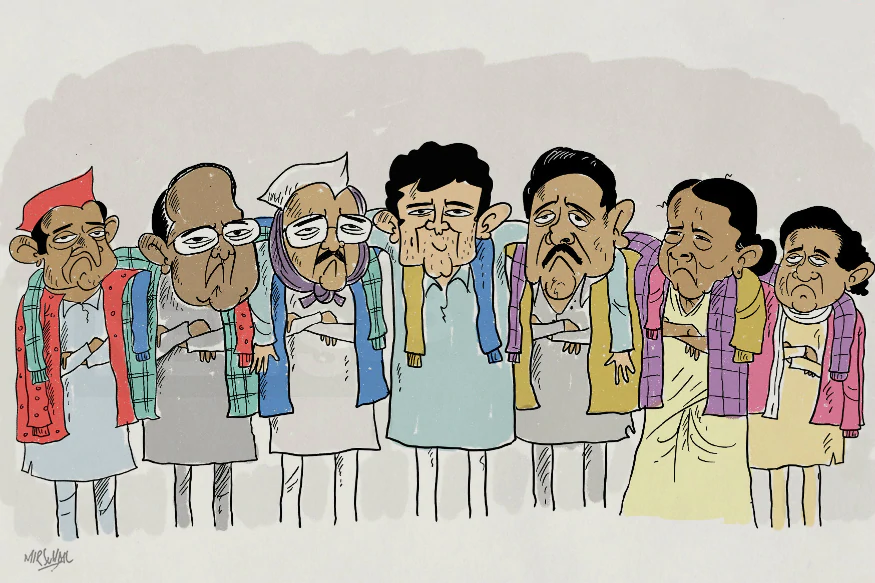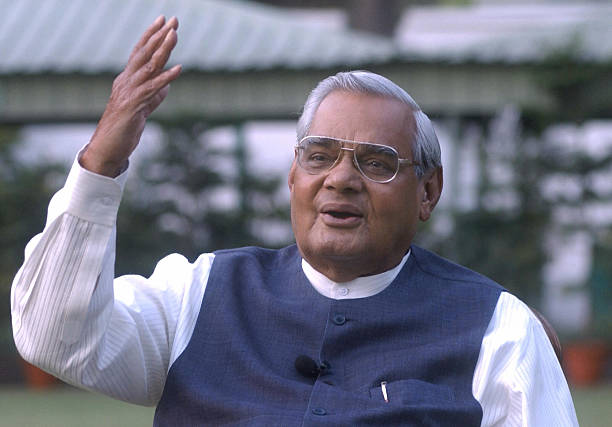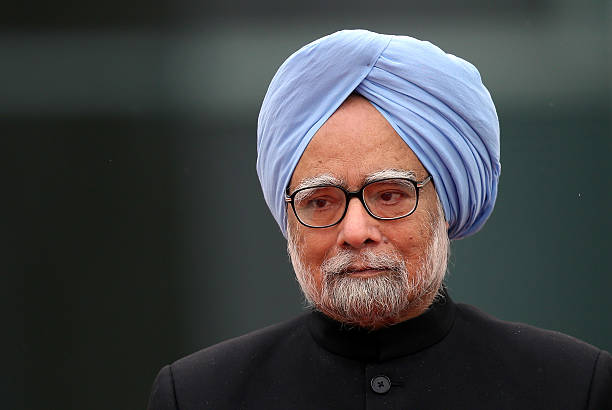
The word ‘Hung Parliament’ comprises of two words, ‘Hung’ the past tense of the word hang which primarily means something which is suspended from above and dangles free in the lower region, and ‘Parliament’ the legislative body of a country. Hence, Hung parliament can be termed as a situation when the decision stays ‘hanging’ and where no party or pre-poll alliance secures a majority to form the government.
What can ‘Hung Parliament’ Force?
- Coalition of government
- Minority government
- Dissolution of Parliament
Laws of the Hung Parliament
The Lok Sabha has a total of 545 seats, in which 543 are elected members and two nominated by the president. To win a majority in the lower house, a party or a pre-poll alliance needs to reach the half-way mark of 272.

The President also has special powers which are enacted in the case of a hung parliament in which, Article- 74(1) of the Constitution of India clearly states that it is imperative to have a Council of Ministers, the responsibility of appointing the same is bestowed on the President, the person with whom the prime power of the union is vested in regards to Article 53(1). In doing so the President is supposed to also abide by the constitutional provisions especially carry on his duty under Article. 60 i.e. to preserve, defend and protect the Constitution. Therefore, any act done by the President not in conformity with the constitutional scheme can not only expose his to censure but also might lead to his impeachment under Article 61.
When a President is to be impeached for violation of the Constitution, the charge shall be preferred by either House of Parliament.
Article 61(1), Constitution of India
When it is evident that there is no single party which can form a government, the President is given certain powers to solve the issue and can explore the following options to solve the situation-
- Can invite the Leader of the ‘Largest pre-poll coalition’ to form the government.
- Can invite the Leader of the ‘Single Largest Party’ to form the government.
- Can invite the Leader of the ‘Largest post-poll coalition’ to form the government.
There are a range of solutions for the president to resolve the issue of ‘Hung Parliament’ but if everything goes in vain and there is no conclusion, then the President can impose the ‘President’s Rule’ and the Lok Sabha can be placed under ‘suspended animation’ which can last up to 6 months. During the span of 6 months, any party or coalition can be given an opportunity to revamp their numbers and form a stable government.
Incidents of Hung Parliament
13th Indian General Elections of the year 1999
The year 1999 was a monumental year for the political framework of India as it saw ‘Fresh Elections‘ where there was a range of coalitions, the most noteworthy of which was the NDA (National Democratic Alliance) – BJP (Bhartiya Janata Party) coalition led by ‘Atal Bihari Vajpayee’, the onset of 1999 elections saw NDA as a force to be reckoned with, facing a range of failures before, these elections were treated as a redemption for the then leader.

Alongside that, the Congress-led by Sonia Gandhi did a lot of good deeds and focussed on a range of interests of their voters. Despite relatively strong opposition, the NDA won with a clear majority of 269 seats, where Congress had 136 seats. The government was led by Atal Bihari Vajpayee who was the 13th Prime Minister of the nation and was in office for the next five years.
After continuous turmoil in the political framework of the country, under Prime Minister Atal Bihari Vajpayee for the first time of the three elections did the country see political stability after many years of voter fatigue which also threatened the country to plunge into a political kaleidoscope of regional tugs and shoves.
14th Indian General Elections of the year 2004

This time saw a shift of the millennium and also a new political framework, the Congress-led UPA came to power during these elections and ‘Manmohan Singh’ was appointed as the Prime Minister. The Congress won 145 seats (26.5 %), UPA won 225 seats (36.8 %). During the 2004 elections, Congress-led UPA did not attain absolute majority to gain power but was later invited by the President APJ Abdul Kalam to form the government after the left parties assured outside support to the UPA.
11th Indian General Elections of the year 1996
The Elections of 1996 saw a hung parliament. The BJP, alliance led by Atal Bihari Vajpayee was the largest party with 161 seats but could not prove their majority in the Lok Sabha and resigned after having a tenure of mere 13 days as the Prime Minister. The Congress was the second largest party with around 140 seats, but it refused to form a government instead chose to back a United Front government of the Janata Dal and other parties, where H.D. Deve Gowda was elected as the representative or Prime Minister.
The Congress, however, withdrew support and the Gowda government collapsed. Later, a compromise was made and IK Gujral was elected as the New Janata Dal Prime Minister but his government did not last long much after leaders of the 13-party United Front coalition rejected the Congress’ demand to oust the DMK.
The years between 1996-1998 were times of political turmoil, after the departure of P.V. Narsimha Rao in 1996, the country had to wait for another three years to see the new regime.
12th Indian General Election of the year 1998
BJP emerged as the largest party with 182 seats, where the congress has just 141 seats, the BJP- NDA alliance had 256 seats and was led by Atal Bihari Vajpayee. But, the government fell short of one vote during the confidence voting of April 1999 after one of NDA’s renowned allies ‘AIADMK’ (All India Anna Dravida Munnetra Kazhagam) pulled out their vote. After being the Prime Minister for 13 days in 1996, Atal Bihari Vajpayee’s second tenure lasted for 13 months, following which in 1999 fresh elections were held.
Reasons for Hung Parliament
A very important reason for the cause of Hung Parliament is the emergence of regional parties and the significant increase of their dominance and say in the arena of ‘National Politics’. Due to the increasing influence of regional parties, national parties are not being able to form a majority. Coalitions are also not full proof always, for example; during the Elections of 1998, BJP led NDA was in the race of becoming the dominant party with its alliances but during the confidence voting in April 1999, ‘AIADMK‘ a regional party pulled out their vote.
Another important reason is the low turnout of elections, there are still many people who either don’t cast their vote or press ‘NOTA’ which makes their vote insignificant, which may be one of the main reasons for distributed or fewer votes.
Effects of Hung Parliament
Political Instability is one of the main reasons why Hung Parliament can be so detrimental for any nation. It is very evident from the History of governance in India that it has been a major cause of political turmoil and civic distress. For example; during the ‘three elections‘ of 1996, 1998, 1999- there was a time of unrest after the departure of P.V.Narsimha Rao in 1996 after which there wasn’t any representative to lead the country for approximately three tenures.
The absence of any leader causes not just political but unrest throughout the nation for various reasons like- Trade & Commerce, International Relations etc.
Although, after a hung parliament a coalition comes to power, no single party has a majority, hence no single party can make a lasting decision, also known as a minority government. There is a lacuna in decision making, they are always in conflict with the opposition.
Conclusion
The situation of ‘Hung Parliament‘ can be a very big cause for malfunctions and disputes in a country. Despite that being the case, it is also a situation which has certain solutions-
- The need to educate voters and make the Indian citizens informative about their civic liberties through initiatives taken to educate them and make them realise the need to cast a valuable vote.
- Incorporation of various systems like the Two-ballot system where there are two sets of elections held, the first to choose the two most capable candidates and later another to choose the ideal candidate among the two.
For example:- The phenomenon of a hung parliament was also very frequent in France but soon stabilised after this method voting.
These are some ways in which the system of Hung Parliament can be resolved.
Editor’s Note
The term ‘hung-Parliament’ means a Parliament where no party or a coalition that is already in existence is able to gain a simple majority after elections. This means that no political party wins enough seats to secure an overall majority to form the government. When this happens, it is the responsibility of the President to take action and resolve the situation. If that does not happen, then there are various consequences of such an occurrence, which have been discussed in the paper.
Along with that, the reasons for hung-Parliament, the duties of the President in dealing with the situation, and instances of hung-Parliament in India have also been discussed herewith.